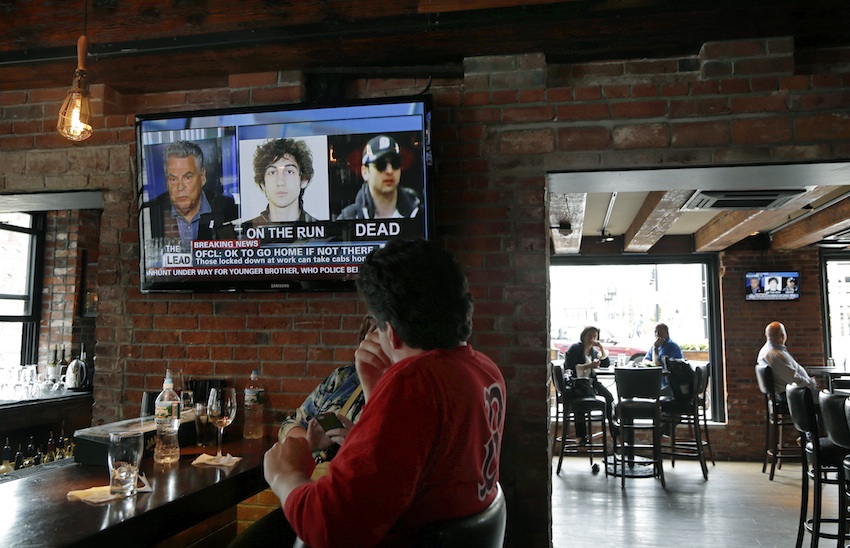Study: Watching Wall-to-Wall Coverage of the Marathon Attack Was More Stressful than Being There
People who watched wall-to-wall news coverage after the Boston Marathon bombing were actually more likely to exhibit signs of acute stress than those who were directly impacted by the event, according to a new study released in the journal PNAS.
The University of California-Irvine researchers asked a broad subsection of people to rate how often they experienced 30 statements, like “I feel hypervigilant or ‘on edge.'” They used clinical definitions to assess respondents’ stress levels and found that those who repeatedly exposed themselves to violent TV coverage were more likely to show symptoms of stress than those who were present in Boston that day. (Over 1 percent of their respondents were at or near the finish line, and about 9 percent had a close friend or family member there.) Their findings followed earlier research showing that exposure to coverage of the 9/11 attacks was unhealthy. What’s new, and scary obviously, is the conclusion that one doesn’t even need to be personally impacted by a horrible event to be impacted by TV coverage of it.
Before we go railing against the scourge of 24-hour modern media, it’s worth digging into the research a bit. After all, the study authors noted that overall people were “resilient” in the aftermath of the marathon, especially those directly impacted:
Perhaps the well-prepared emergency response teams at the site of the BMB [Boston Marathon Bombing] were able to provide sufficient support for directly exposed individuals that their acute stress symptoms were kept at a minimum. An American Red Cross public campaign encouraging Bostonians to limit their exposure to media may also have helped to limit the spread of acute stress. At the same time, given the robust nature of our findings, there are likely to be unique characteristics (other than mental health and habitual television watching) that led individuals to expose themselves to extensive BMB-related media.
That’s an important question, too: why did people without a personal stake watch six hours of TV coverage a day? That’s … a lot of TV. The authors attempted to survey the mental health of their subjects’ before the attack, and to control for those that just watch a lot of TV anyway, so that their study would only look for those whose levels of stress changed over time. But admitted that there were limitations to knowing everything about their subjects’ predisposition to stress before the attack.
All these caveats are important to keep in mind because a study like this has big implications for media coverage. Even before this study, there were plenty of complaints in Boston suggesting that the news should stop reairing footage of the bombs exploding on loop, for fear it would give viewers acute stress symptoms. The study’s authors caution media outlets about this, too.
Media outlets should recognize that repeatedly showing gruesome, distressing images serves to keep the potentially traumatic experience and event-related distress alive. To limit the potential for harm, viewers should be warned when these images are about to be shown.
They note, though, that the media has some responsiblity to report gruesome images in the wake of an attack, health impacts on their biggest viewers aside. “Our results should not be construed to imply that media serves no positive purpose when disaster strikes.” You can imagine how deliberately covering up unpleasant footage might stoke the flames of denialism that flourish after any instance of mass violence.
So rather than ask the media to limit what they report, the study’s conclusions that the media should responsibly warn viewers before showing violence, and show some restraint in constantly reairing it, and that viewers themselves should responsibly avoid exposing themselves at too much length seems like the right path.


